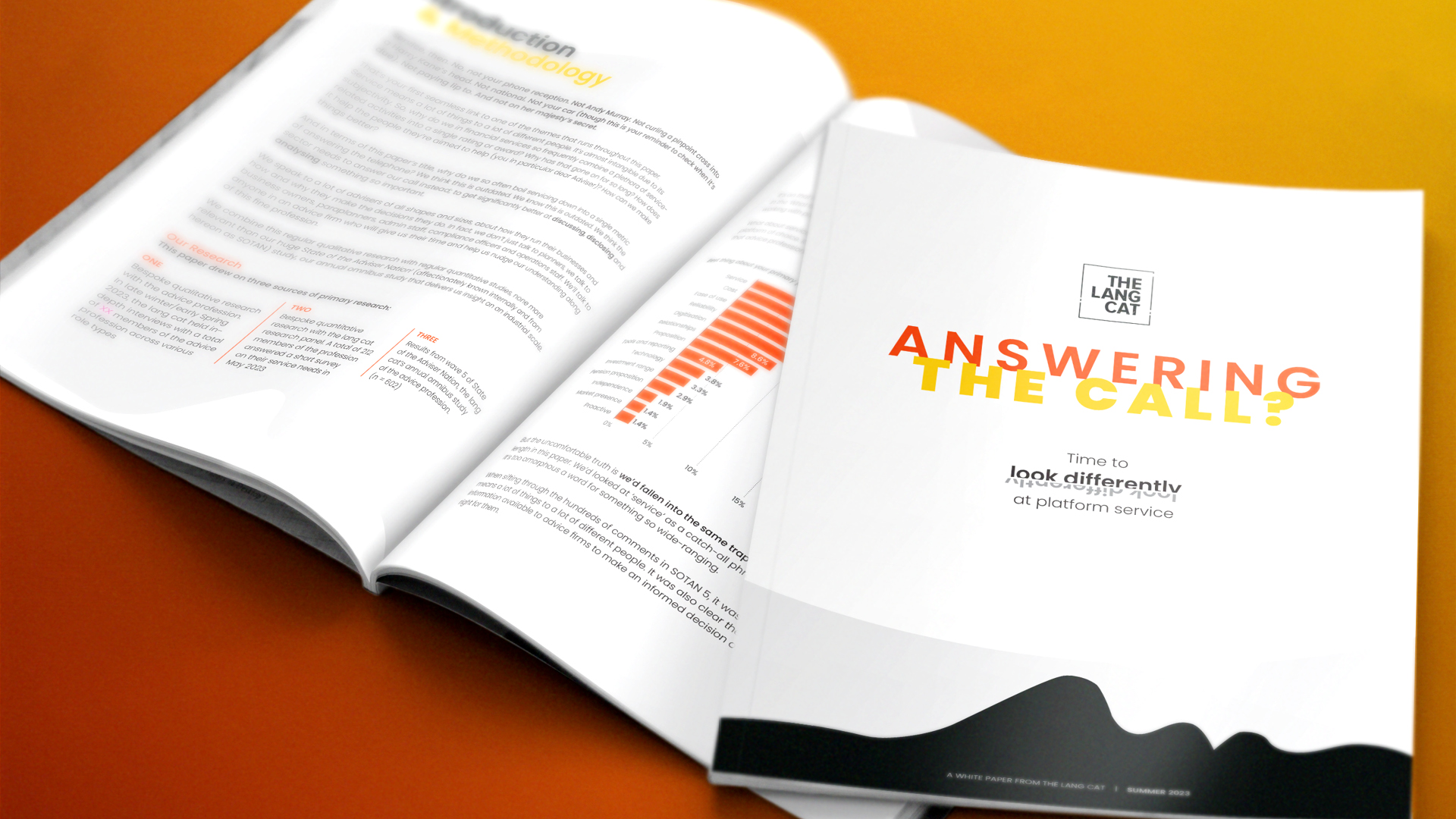So I had the pleasure of attending the Cofunds’ relaunch / refresh / briefing today, wherein Martin, Verona and the gang told us about their plans for unbundling and changing the Cofunds proposition over the next year or so.
I’ve been looking forward to this announcement as I am a bit of a fan of Cofunds (other platforms are available) and I think they have a genuine opportunity to lead the market. After the announcement today I’m a little bit conflicted to be honest – I think they’ve done a bunch of really good, brave stuff that they should be congratulated for. But mixed in there are a couple of slightlyÃÂ sub-optimal decisions that I wish they’d been able to get past. Let’s go through some of the key themes.
- Martin Davis gave a good account of Cofunds’ business model, stressing diversification and sustainability. I thought this was pretty compelling. They’re profitable – albeit not massively – and they have plenty of capital (£45m) in the bank. The D2C, institutional / black box stuff and core IFA propositions all contribute broadly similar margins, meaning they can line up where they see market demand. 750k customers, 7,500 advisers, 27 XO brokers, 24 wealth managers, 7 providers, 3 custodians/platforms and a partridge in a pear tree can’t all be wrong. If I was an IFA I’d be feeling comfortable about the sustainability of Cofunds as a business.
- The tripartite proposition going forward – execution only (via brokers), wrap-type IFA business and ‘enterprise’ (black box) solutions seems like an intuitive way to structure things and chimes with what the lang cat sees in the market. So a big tick there.
- Some of the support features that Cofunds will develop over the next 15 months or so are well suited to their market, if not ground-breaking. Making quotes easier for clients to understand is a laudable ambition. Increasing adviser fee flexibility is a must, and I liked the ability for advisers to apply different charge shapes to different segments of their client bank. Supporting adviser-level unit rebates (where the distributor has negotiated a better deal than Cofunds themselves) is smart and will help with big deals. And getting new T&Cs out there for non-advised customers will help Cofunds gradually nibble at the bunions of Hargreaves Lansdown.
- Cofunds have been ballsy with fund managers, which is good fun. They’ve said that they want ‘clean’ share classes only – so no rebates at all. On a question about fund manager reaction from yours truly, Martin described it as ‘mixed’. It’ll be interesting to see how hard-line Cofunds want to be over the next year or so – will fund managers who only want to do a 100bps share class with rebates be told to go and boil their bottoms? We shall see.
All this is very positive and we shouldn’t underestimate the sheer force of will and effort it takes to move a provider from being bundled to completely transparent. I think this is a great step for a £34bn player to take and we should take it as A Good Thing without reservation. Plus announcing your intentions in this much detail well in advance takes a serious pair of cojones, so congratulations to the whole team on Mincing Lane.
Right. Gulp. It’s time to talk about the new charging structure. Before I detail it, my reservations are not about whether it is a few basis points more or less than the current bundled model. For those worried about 4bps extra, they can stay in the bundled world (unless the FSA ban it) and save their £8 or so.
Here’s how it breaks down in the new world.
- £40p.a. platform charge (up against Skandia at £68.50 and Fiddy at £52)
- AMCs:
£0 – £100,000: 0.29%
£101,000 – £250,000: 0.26%
£251,000 – £500,000: 0.23%
£500,001 – £1 million: 0.20%
£1 million +: 0.15%
- Pension account charges (for the collectives-only ‘pension lite’) are unchanged (or not mentioned at the session) – so £150 to set up and £150 from year 2 on plus some other nibbly bits.
- The switch charge of 0.2% is removed. Huzzah!
Hmmmmm. I think, this tiering is, over-complex and while I’m happy that Cofunds will disclose a composite charge to make it simpler to understand, it doesn’t feel compelling. To me, any structure which starts at 0.29% is thinking more of its finance function than having a market-dominating proposition. If we have to have tiering, I’d rather see it start flat at 0.25% and go all the way up to £500k, with, a drop there and another at £1m. Remember that the bundled option is still available, so small clients with stable portfolios can stick at/around 0.25%. The £40 replaces the 0.2%; some will win, some will lose.
I’m also troubled by the pension account. Cofunds don’t really have enough pension assets on the platform yet – they’re devastatingly effective in ISAs/ GIA but this is an area for development. On current available information, this feels like an opportunity missed to be properly tax wrapper neutral.
So for a £150k client, say, with £75k in the pensions account and £75k in ISA/GIA, here’s how I see it breaking down:
£100k @ 0.29% = £290
£50k @ 0.26% = £130
£40 platform charge
£150 establishment charge
Total – £610, representing 0.41%.
If my arithmetic is right, this is pricing on the market rather than leading the market. Cofunds clearly want to drive their average ticket up and to take on the wraps at their own game, but with wrap competitors now writing pension, ISA and GIA business at around 35bps all in, this is just a little bit off. Of course, if they can get much better rebates in their clean share classes, then the total cost of investing will shape up. But to me, this reads like a proposition that’s been carefully calibrated to land at certain points in the league tables at certain portfolio sizes, rather than one borne of conviction. And providers need bravery and conviction in our space right now, maybe more than an extra 4bps of revenue.
I’m probably splitting hairs a bit. But ifÃÂ the vague sense of dissatisfaction with this structure I haveÃÂ is echoed elsewhere, it may detract a little from the big range of very good things that the team have put forward today. That’s a shame. And I’m willing to make a bet that if the guys at Cofunds had their way and the finance team locked in the basement, they’d go for a simpler structure too.
But this is what it is (for now), it’s not bad by any stretch of the imagination, and all in all the team can take a bow. They had a good day.




